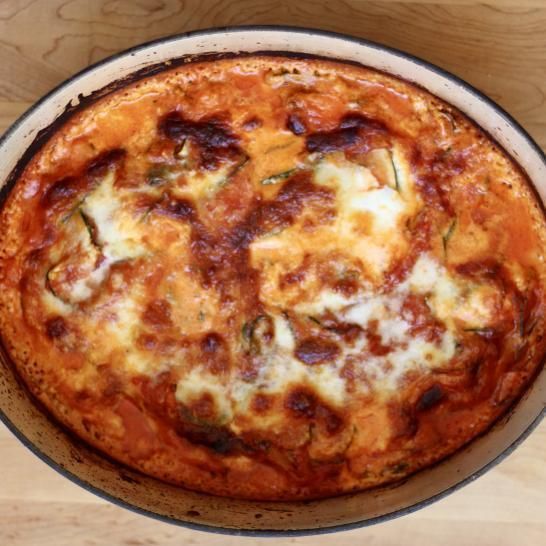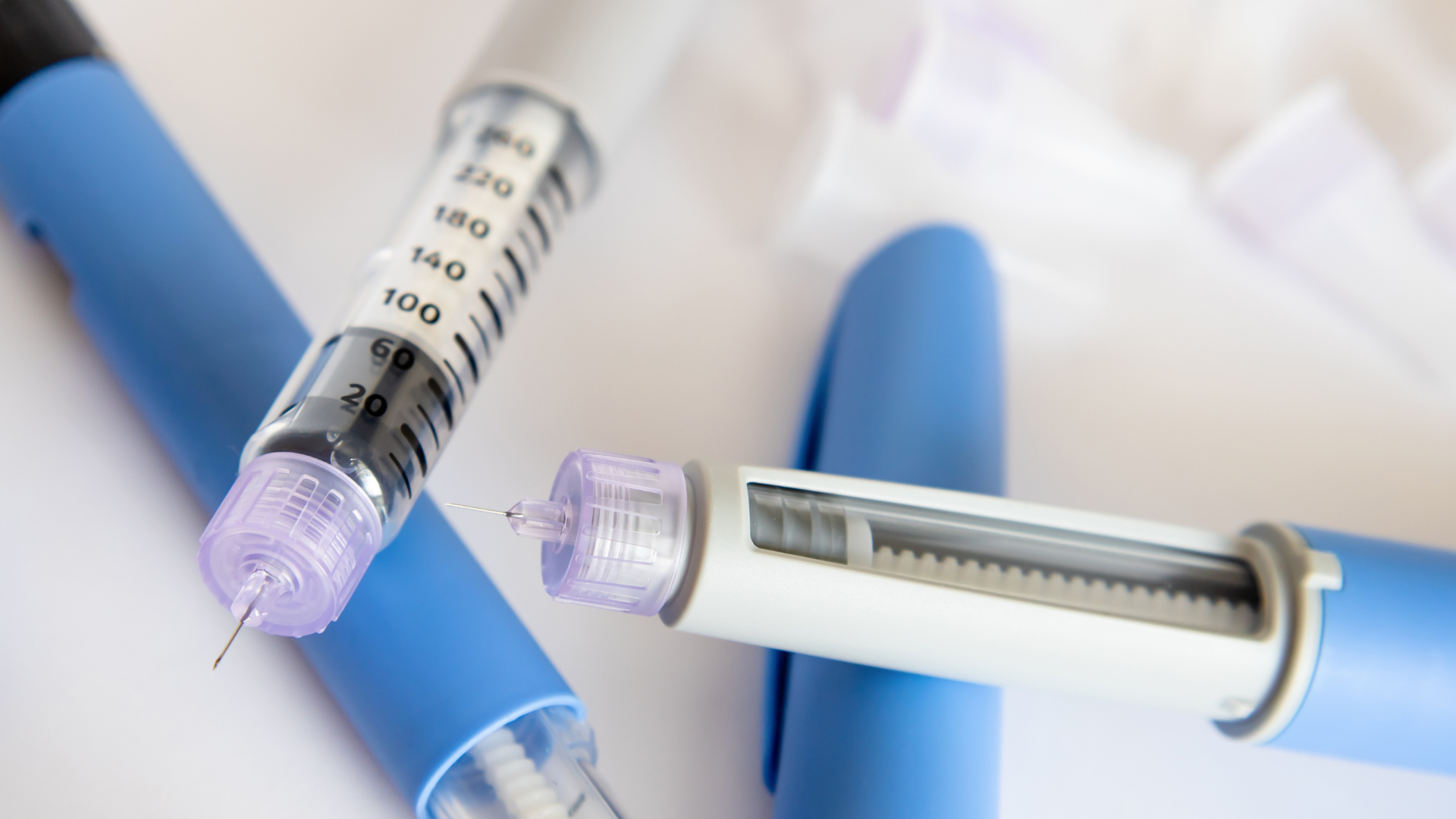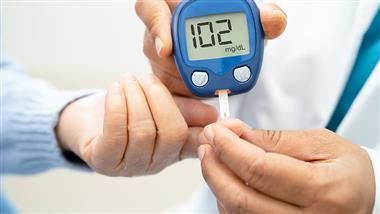Diabetes-Friendly Sushi – Your Ultimate Guide
Sushi is a favorite dish for many, but navigating this carb-heavy food can pose a challenge for those with diabetes. Learn more about the varieties of sushi, nutrition information, and tips for enjoying diabetes-friendly sushi.
Sushi can be challenging for people with diabetes, who often refer to it as the “food they love that doesn’t love them back.” Why? Because depending on the type of sushi you order and the portion you eat, it can be a healthy pleasure, or a decadent disaster.
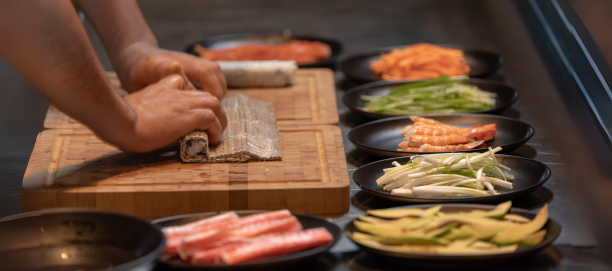
How is sushi made?
Traditional sushi is made of small pieces of raw fish wrapped in rice and dried seaweed called nori. Pickled ginger, wasabi, and soy sauce are common garnishes. The rice, which is the main ingredient, is prepared with vinegar, salt, and often added sugar. That’s why sushi can be such a challenge for people with diabetes.
Rice is a food with a lot of carbs and can cause glucose levels to spike, or create a roller coaster with unpredictable swings in your glucose levels. Because of this, diaTribe recommends you reduce these “spiky” carbs with the goal of eliminating them. However, if you're not ready to ditch sushi just yet, there are ways to make sushi more diabetes-friendly.
If you’re new to sushi, use the list below to learn about how the different types are made. These different types of sushi vary primarily in how the fish and rice are put together.
- Sashimi: Thinly sliced raw fish served by itself without vinegared rice or nori.
- Chirashi: Vinegared rice in a bowl, topped with raw fish and nori slices.
- Nigiri: A hand-pressed mound of vinegared rice, topped with a slice of raw fish.
- Temaki: Fish, vinegared rice, and vegetables, hand-rolled in nori and shaped into a cone.
- Maki: Fish, vinegared rice, and vegetables, rolled in nori and sliced into rounds.
- Uramaki: Sometimes called inside-out roll because the vinegared rice is on the outside, and the nori is hidden inside.
Is sushi healthy?
Sushi can be healthy – many of the ingredients used to make sushi come with nutritional benefits. Fish and shellfish contain high-quality protein, heart-healthy omega-3 fatty acids, and other essential nutrients that are an important part of a healthful diet.
“Eating fish regularly has been associated with lower risks of chronic diseases like heart disease," says Mary Ellen Phipps, a Houston, Texas-based registered dietitian and nutritionist. The American Diabetes Association (ADA) recommends people with diabetes eat 4 ounces of fish at least two times per week.
Many sushi varieties are also rolled and garnished with vegetables. There’s evidence that eating a variety of vegetables is associated with a reduced risk for heart disease, including heart attack and stroke. Vegetables are an important source of many nutrients, including potassium, fiber, folate, vitamin A, and vitamin C. “And the seaweed wraps used to hold sushi together (nori) offer iron, calcium, and vitamin A, as well as some anti-inflammatory properties,” says Phipps.
Traditional sushi is low in fat, saturated fat, and cholesterol, for example:
- Tuna roll: vinegared rice, raw tuna, and nori. One roll: 194 calories, 0.8g fat, 0.3 g saturated fat, 33mg cholesterol, 67mg sodium, 21g carb, 24g protein.
- Shrimp roll: vinegared rice, raw shrimp, and nori. One roll: 155 calories, 1g fat, 0.3g saturated fat, 107mg cholesterol, 482mg sodium, 22g carb, 13g protein.
- Vegetable roll: vinegared rice, asparagus, avocado, cucumber, green onion, and nori. One roll: 206 calories, 8.2g fat, 1.2g saturated fat, 0mg cholesterol, 153mg sodium, 30g carb, 6.6g protein.
In contrast, “Americanized” decadent sushi is often made with less healthy ingredients high in fat, saturated fat, cholesterol, sodium, and carbohydrate. Maki and Uramaki rolls have been more Americanized than any other type of sushi. Exercise caution when eating these types of rolls, which may contain deep-fried ingredients, mayonnaise, or cream cheese, for example:
- Shrimp tempura rolls: vinegared rice, nori, battered and deep-fried shrimp, and may also have a crunchy, deep-fried coating. One roll: 400 calories, 11g fat, 2g saturated fat, 25mg cholesterol, 1160mg sodium, 61g carb, 11g protein.
- Spicy tuna rolls: vinegared rice, nori, tuna mixed with spicy mayonnaise, and maybe topped with spicy mayonnaise. One roll: 379 calories, 19g fat, 3.1g saturated fat, 43mg cholesterol, 463mg sodium, 26g carb, 23g protein.
- Philadelphia rolls: vinegared rice, nori, smoked salmon, and cream cheese. One roll: 391 calories, 14g fat, 6.3g saturated fat, 35mg cholesterol, 1115mg sodium, 55g carb, 11g protein.
Garnishes and sauces can also add more sodium and carbohydrate to sushi.
- 1 tbsp teriyaki sauce, 690mg sodium, 2.8g carb
- 1 tbsp wasabi, 678mg sodium, 9.2g carb
- 1 tbsp pickled ginger, 99mg sodium, 3g carb
- ½ ounce masago (roe), 380mg sodium, 3g carb
- 1 tbsp unagi (eel) sauce, 33 mg sodium, 6.8g carb
- 1 tbsp soy sauce, 879mg sodium, 0.8g carb
Keep in mind the ADA recommends people with diabetes have no more than 2300mg sodium daily. So, just one roll with soy sauce, wasabi, and pickled ginger would knock your sodium intake out of the ballpark. Then of course there’s the abundance of carbs. To stay in range, diaTribe recommends you have 100-150g carbs total per day with only 30g carbs per meal or snack. Certain types of sushi with a lower carb count, such as maki (as opposed to uramaki) can help you stay in range.
Editor’s note: The nutrition information provided was retrieved from the Nutritionix database. However, it should be noted that nutrition information varies from one source to another based on portion size, brand, and ingredients added. Therefore, you should consider the information as a point of reference only.
Is sushi safe?
Raw fish may carry parasites, bacteria, and viruses that cause foodborne illness. Phipps added, “to prevent the risk of contamination, the U.S. Food and Drug Administration recommends sushi fish be flash-frozen at sub-zero temperatures.” Complete freezing will kill any parasites.
Raw fish is also highly perishable. So, whether you are eating at a sushi bar or a Japanese restaurant, choose a busy place that serves a lot of sushi. The high turnover gives you a better chance of getting fresh fish.
Additionally, The FDA recommends pregnant women, children, older adults, and persons with weakened immune systems avoid raw fish. The good news is most sushi menus offer vegetarian sushi and sushi made with cooked fish that may be a good option for these groups.
How can you make sushi diabetes-friendly?
Here are a few steps you can take to make your sushi more diabetes-friendly:
Count carbs
Counting carbs is the only way to know how many carbs you’re eating. This is important because carbs have the biggest effect on glucose, and it's easier to manage your glucose if you eat fewer carbs at each meal.
"I find that eating one or two pieces of rice-filled sushi is generally pretty easy to manage and correct later if needed, whereas an entire plate is much harder to gauge and bolus for," said Larkin Fegurgur Clark, a San Francisco based journalist, filmmaker, and photographer who has has type 1 diabetes for 28 years.
Opt for maki sushi instead of uramaki or nigiri
There tends to be more rice on the uramaki and nigiri sushi, which contributes to a higher carbohydrate content. For example, a California roll – a type of uramaki roll with rice on the outside, has 38g carbs compared to the 27g carbs in a maki tuna roll.
Although uramaki has more carbs in general, Clark finds the structure of uramaki and nigiri beneficial, in that the fish is placed over a mound of rice.
"If my blood sugars are running high or I simply decide mid-meal, I don't want to have to put in the legwork of remembering to pre-bolus for the rice, such as when I'm out with a group. I can easily separate the rice and eat the lower-carb portion of the serving," Clark says. Chirashi sushi with the rice in a bowl will also make it easier to separate the rice.
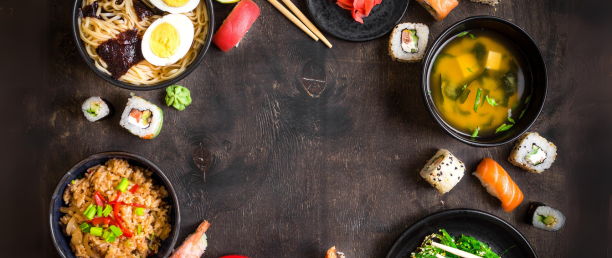
Pair sushi rolls with other foods
If carbs are combined with protein, fiber, or fats, it can slow down the release of glucose into the blood. So, start your meal with miso soup, a salad, or a side of edamame or vegetables.
Phipps, who has been living with type 1 diabetes for 30 years, finds this strategy helpful. "I've found that if I enjoy a non-starchy veggie or salad before eating the sushi roll and do a pre-bolus time of 20-25 minutes, my blood sugars typically do just fine," she said.
Clark also finds that sushi rolls with added fat can blunt the effect of the rice carbs. "I gravitate toward Rainbow or California rolls, both because I like the flavor and because the protein and added fat from the avocado seem to help delay the impact of the rice carbs a bit," Clark says.
Order brown rice instead of white
Due to consumer demand, some restaurants now offer sushi made with brown rice. Brown rice has fiber that can slow the uptake of glucose. The fiber in brown rice also helps to fill you up more than white rice. Whether you’re eating sushi made with white or brown rice, portion control is a must.
Choose sashimi over sushi rolls
Sashimi is only fish and has zero carbohydrates. “Sashimi is a go-to if my blood sugars are on the high side and there’s not enough time to bring them down before the sushi arrives,” says Clark. “I might also order sashimi with a side of rice, making it easier to bolus for the rice in a more familiar presentation, versus it being wrapped in a roll.”
Some restaurants even offer riceless sushi options, such as naruto sushi, which are sushi rolls wrapped with shavings of cucumber rather than rice and nori.
Watch out for sauces
Sauces such as teriyaki or unagi can contain a considerable amount of sodium and added sugar. Be sure to request the sauce on the side so you can control the amount you consume. Some restaurants will provide low-sodium soy sauce as an option.
Ask the server questions
Sushi rolls – especially specialty rolls, can vary in size and ingredients. Ask the server about how many pieces are in the roll and what’s inside each piece. For example, Maki rolls range from small (Hosomaki) with one filling to large (Futomaki) with 2-3 fillings. The larger the roll, the more rice, and carbohydrates.
"Larger rolls that have more rice will obviously require a larger pre-bolus, as will any sushi with a sweeter marinade or sauce incorporated into it," says Clark. "I always ask the server ahead of time if there are any sweet marinades or sauces I should be aware of, as that's not always clear on the menu," she added.
DIY with a sushi kit
Making sushi rolls at home with a sushi kit is easier than you think, and it doesn’t even require culinary skills. Sushi-making kits are readily available in stores and online.
A basic sushi-making kit includes a rolling mat, rice paddle, and rice spreader. Other kits provide all the ingredients needed for sushi rice, plus seasonings, a rolling mat, and recipes. Making sushi at home has many advantages. “You can more accurately measure the amount of carbs per serving and better control other variables, like added sugars and pre-bolus timing,” says Clark.
However, per the FDA recommendations, be sure to store raw fish properly to avoid foodborne illness, especially for pregnant women, children, and older adults.
Keep a diary
Clark and Phipps both agree that it can take trial and error to keep your glucose levels stable while eating sushi when you have diabetes. Clark says, “If I really love a certain sushi type and it adversely impacts my blood sugars the first time I eat it, I’ll try eating it again with a minor adjustment to insulin dosing and/or timing. The more data I have on that food’s impact on my blood sugars, the more likely I’m able to stay in range when eating it in the future.”
The bottom line
Having diabetes doesn’t prevent you from enjoying sushi or any other food you’re interested in trying. However, it does require you to make wise choices, keeping the basic principles of healthy eating in mind – limit foods high in sugar, saturated fat, and salt, and be careful about when and how many carbohydrates you eat.
Healthy Bites

